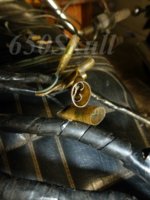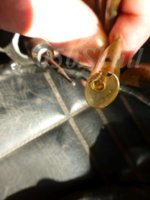I have yet to really get serious about this, but it is coming. I have tried a few different methods.
I have pulled the connectors apart and sprayed electrical contact cleaner then working fine sandpaper in there to try to shine things up ( very slow and not sure how effective)
After reading online about science being your friend, I tried what a lot of people swear by, using a solution of vinegar and salt and soaking a connector for 5 minutes, then rinsing off with water and then spraying it with contact cleaner. That did ok but again extremely tedious.
I have thought about just replacing the wiring harness, but everything the new harness plugs into is still crusty.
So... I'm sure you old pro's have some Jedi secrets for effortless contact cleaning.
How do you do it?

I have pulled the connectors apart and sprayed electrical contact cleaner then working fine sandpaper in there to try to shine things up ( very slow and not sure how effective)
After reading online about science being your friend, I tried what a lot of people swear by, using a solution of vinegar and salt and soaking a connector for 5 minutes, then rinsing off with water and then spraying it with contact cleaner. That did ok but again extremely tedious.
I have thought about just replacing the wiring harness, but everything the new harness plugs into is still crusty.
So... I'm sure you old pro's have some Jedi secrets for effortless contact cleaning.
How do you do it?


